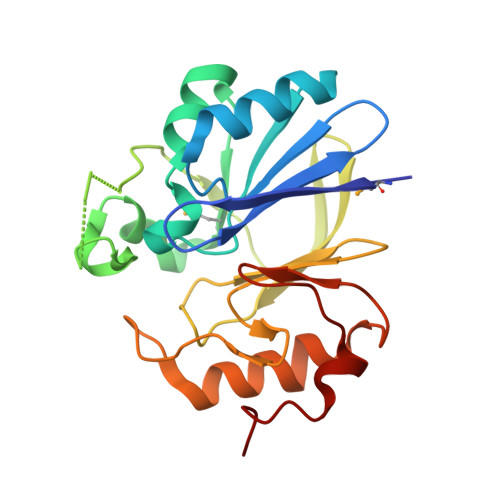Structure-guided microbial targeting of antistaphylococcal prodrugs.
Miller, J.J., Shah, I.T., Hatten, J., Barekatain, Y., Mueller, E.A., Moustafa, A.M., Edwards, R.L., Dowd, C.S., Planet, P.J., Muller, F.L., Jez, J.M., Odom John, A.R.(2021) Elife 10
- PubMed: 34279224
- DOI: https://doi.org/10.7554/eLife.66657
- Primary Citation of Related Structures:
7L0A, 7L0B - PubMed Abstract:
Carboxy ester prodrugs are widely employed to increase oral absorption and potency of phosphonate antibiotics. Prodrugging can mask problematic chemical features that prevent cellular uptake and may enable tissue-specific compound delivery. However, many carboxy ester promoieties are rapidly hydrolyzed by serum esterases, limiting their therapeutic potential. While carboxy ester-based prodrug targeting is feasible, it has seen limited use in microbes as microbial esterase-specific promoieties have not been described. Here we identify the bacterial esterases, GloB and FrmB, that activate carboxy ester prodrugs in Staphylococcus aureus. Additionally, we determine the substrate specificities for FrmB and GloB and demonstrate the structural basis of these preferences. Finally, we establish the carboxy ester substrate specificities of human and mouse sera, ultimately identifying several promoieties likely to be serum esterase-resistant and microbially labile. These studies will enable structure-guided design of antistaphylococcal promoieties and expand the range of molecules to target staphylococcal pathogens.
- Department of Pediatrics, Washington University School of Medicine, St. Louis, United States.
Organizational Affiliation:



















